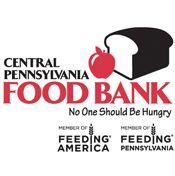Snyder, Union, and Northumberland County Hunger Mapping
In Collaboration with


One in eight (12.5%) individuals in Snyder, Union, and Northumberland counties (the SUN region) faces food insecurity. In total, more than 22,000 residents of the SUN region did not know where their next meal would come from in 2022. About 5,000 of these individuals had not been food insecure in 2021.
Food insecurity exists in every municipality in the SUN region, but food insecurity has an uneven impact based on geography and demographic factors such as race, ethnicity, age, disability status, and household type. This report seeks to understand the distribution and experience of food insecurity across these counties as well as its drivers and root causes.
The thoughts of neighbors experiencing food insecurity, as collected via surveys conducted at food pantries and other community locations across the region as well as one-on-one interviews, are highlighted throughout this report, as are those of charitable food providers gathered via surveys and listening sessions. Alongside these qualitative analyses, quantitative sources and methods are also employed. This robust, mixed-methods approach allows the final report to provide a rigorous view of the charitable food system in the SUN region while maintaining an emphasis on the human experiences of the people it serves.
To support the work of creating change for food insecure neighbors in the central Susquehanna Valley, this report makes specific recommendations that can be implemented across the charitable food network to improve the experiences of pantry visitors in the short term and to end hunger in the longer term.
Substantive progress toward reducing or eliminating food insecurity cannot be made by one organization alone. Change will require intentional, sustained work by a wide variety of stakeholders, including leaders in the charitable food system, other social service organizations, health systems, local and state government, community members, and many more. Throughout this effort, the SUN region’s charitable food network will build upon its existing strengths while seeking continuous improvement that will help build a community where no one goes hungry.
View An Interactive Copy of the Full Report Below
or CLICK HERE to Download
Avenue One – Charitable Food System Key Findings:
Key Finding 1: The charitable food system in the SUN region has a measurable impact on very low food security among pantry visitors. Households with incomes below the federal poverty line who visited the charitable food system more than twelve times in the last year are 30% less likely to experience very low food security than households of the same income level who visited less than twelve times.
This finding provides evidence that work happening now in the SUN region is having a major positive impact and demonstrates the importance of ensuring the charitable food system is as accessible as possible to all households.
Key Finding 2: The charitable food system in the SUN region has major strengths across a variety of dimensions, including its geographic reach, its widespread use of best practices such as choice models, and its food offerings, which are well-regarded by most households, among other strengths. In addition, the charitable food system is extremely well coordinated in the SUN region, with the Union-Snyder Hunger Coalition and the SUN Food Access Committee leading the way. This effective community coalition has strong leadership and active participation, enabling the coalition to work together to adapt, solve problems, and pursue opportunities.
Key Finding 3: Households with children, Hispanic households, and to a lesser extent, working-age households without children underutilize the charitable food system in the SUN region. This is due to several access barriers that impact these household types uniquely and disproportionately. These barriers to access include:
- Limited evening and weekend access to food pantries across the SUN region: Households with children and Hispanic households are the most likely to have reported that pantry opening times represent a barrier to access, with more than 21% of households with children and 25% of Hispanic households reporting this barrier compared to 11% of all pantry visitor households. These households are the most likely to have reported working full time, and many expressed to CPFB researchers that they have friends or family who would come but cannot make it to the food pantry in time because of work.
The charitable food system in the SUN region should work to strategically expand weekend and evening pantry access. - Higher reported feelings of judgment when utilizing a food pantry: While reported experiences of judgment are relatively low overall across the SUN region, households with children and Hispanic households are twice as likely to have indicated feeling judged (8%) as working-age households without children and white, non-Hispanic households (4% each), and four times as likely as senior households (2%). It is critically important for the charitable food system and pantries to institute policies and training programs that promote positive interactions between pantry visitors and staff or volunteers.
- Variable and uncertain language accessibility: Spanish-speaking households are by far the most likely to report feelings of judgment, with 19% of food pantry visitors who took the survey in Spanish reporting judgment compared to 3% of people who took the pantry survey in English. These negative experiences are due in large part to unpleasant interactions that occur when pantry directions or policies are not available in Spanish and when there are no Spanish-speaking staff or volunteers who can bridge the language barrier. Pantry policies and procedures should be simple and translated into Spanish. The charitable food system should prioritize recruitment of Spanish-speaking volunteers as well. Staff and volunteers should give grace to all households who do not understand pantry policies rather than respond harshly, as policies can be confusing at times and differ from location to location.
- Significant wait times and long lines: Wait times in the SUN region are elevated, with more than 20% of pantry visitors having said that they wait longer than an hour to receive food at a pantry. Wait times and long lines can be discouraging for households with children as they may have less time to wait compared to other household types and it can be more difficult to wait longer times with children.
The charitable food system should experiment with a variety of ways to reduce wait times and long lies including opening more frequently, especially on weekends and evenings.
Avenue Two – Increasing Participation in Key Government Programs
Key Finding 1: There is room for growth in participation in government programs specifically targeted towards children, such as school meals, WIC, and SFSP. These programs are incredibly well-targeted towards the demographic that faces the highest rates of food insecurity in the SUN counties.
- All counties run behind the statewide average in school breakfast participation. There have been some major positive gains since the state universal school breakfast program, but breakfast participation and use of alternative breakfast models is low across schools in the SUN region.
- There are major opportunities to increase WIC participation in all counties, and specifically in ZIP Codes 17801 in Sunbury and 17872 in Shamokin. While promoting participation in this program is key, stakeholders should continue to advocate for reduced administrative requirements to make WIC more accessible.
- The entirety of the SUN region is classified as rural by USDA, so if a census tract is also area eligible for SFSP, it has the potential to host non-congregate meal sites. Where appropriate, the charitable food system should seek out potential SFSP sites or sponsors in eligible gap areas, but it should also invest in privately funded summer food programming for children in ineligible areas.
Key Finding 2: SNAP participation is robust among food pantry visitors in the SUN counties, with 57% of all food pantry visitors participating, including 73% of food pantry visitors with incomes below the federal poverty level. The biggest opportunities to increase SNAP participation exist among senior households in the SUN region and in Snyder County overall, which has experienced a 14% drop in SNAP participation in the last 10 years.
Avenue Three: Household Income and other Key Economic Factors
Overall, this report finds several major upstream issues that contribute to food insecurity in the SUN counties, including limited income and low wages, disability status, housing insecurity, transportation, and health conditions.
Key Finding 1: Unemployment status is an incredibly small contributor to overall demand for charitable food services in the SUN counties. Nearly 90% of food pantry visitors either work full time (20%), receive Disability or SSI (20%), or receive Social Security or a pension (47%).
- Instead, inadequate fixed benefit amounts for Social Security or pension beneficiaries, and especially for SSDI and SSI (Disability) recipients, are major reasons that senior households, households with disabled members, and households with children struggle to make ends meet.
- The main barriers to work among working age households are disability, regardless of if the household is receiving SSI or SSDI or not, and taking care of family (especially for households with children).
- Most households with children work full or part time, but 44% of working households with children who work full time earn less than $24,000 a year. 45% have incomes below the federal poverty line.
Key Finding 2: Housing costs, including utilities and rent or mortgage, are the primary economic tradeoff reported by food pantry visitors in the SUN region.
More than one in three pantry visitors reported choosing between utilities or food in the last year, while more than one in five indicated choosing between food and rent or mortgage. The charitable food system should continue to scale utility and housing assistance activities, as pantries represent a well-targeted location to promote these resources.
Key Finding 3: Chronic health conditions impact more than half of food pantry visitors in the SUN region. Lack of adequate money for food can make it difficult for neighbors to follow condition-specific diets, which can worsen health conditions. In turn, chronic health conditions can make it difficult for pantry visitors to work or access the services they need.
Households with children reported slightly higher rates of having to choose between food and medicine or medical care, at 17% compared to 14% and 15% each for senior households and households without children.
The charitable food system should work with health providers to address the high level of chronic diseases faced, including through increasing programmatic partnerships and connections, and even addressing food insecurity as a social determinant of health through Medicaid 1115 waivers and other emerging opportunities.


